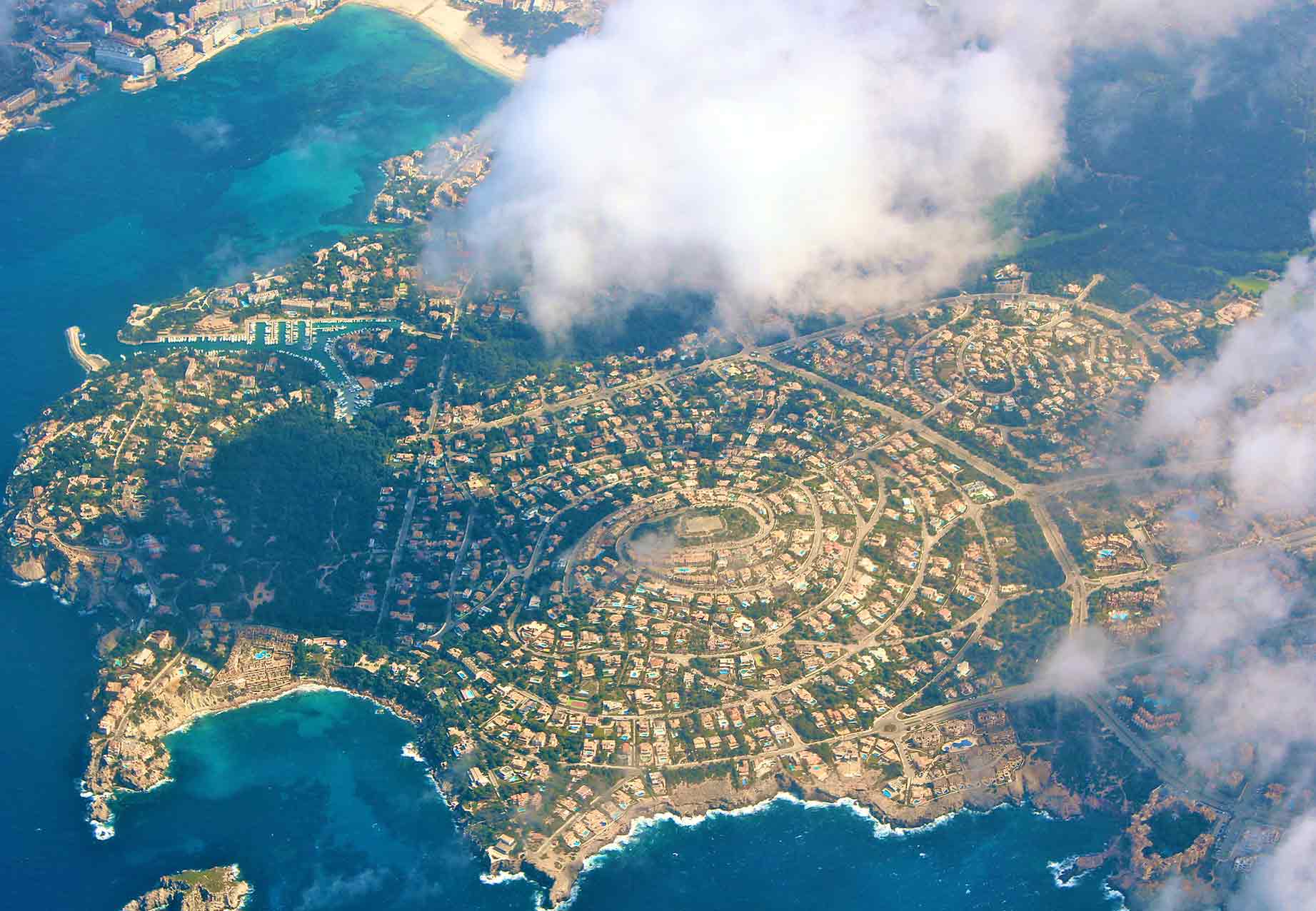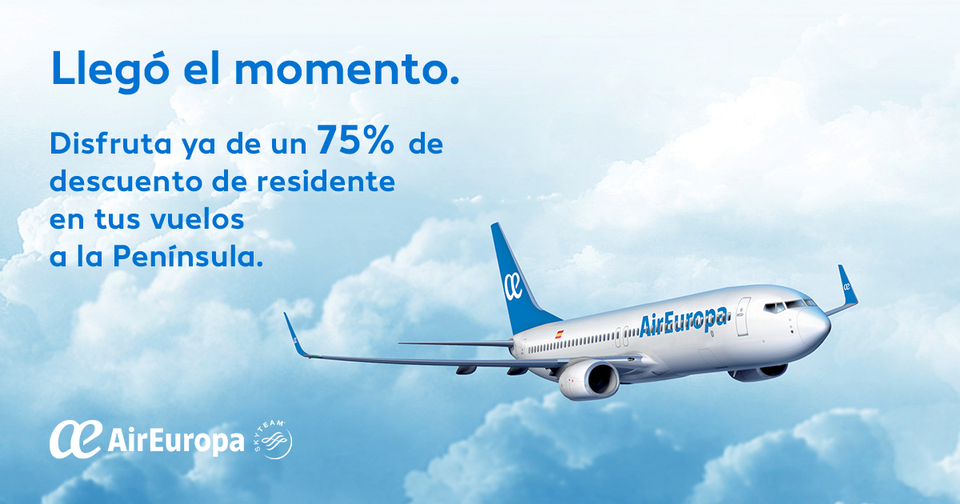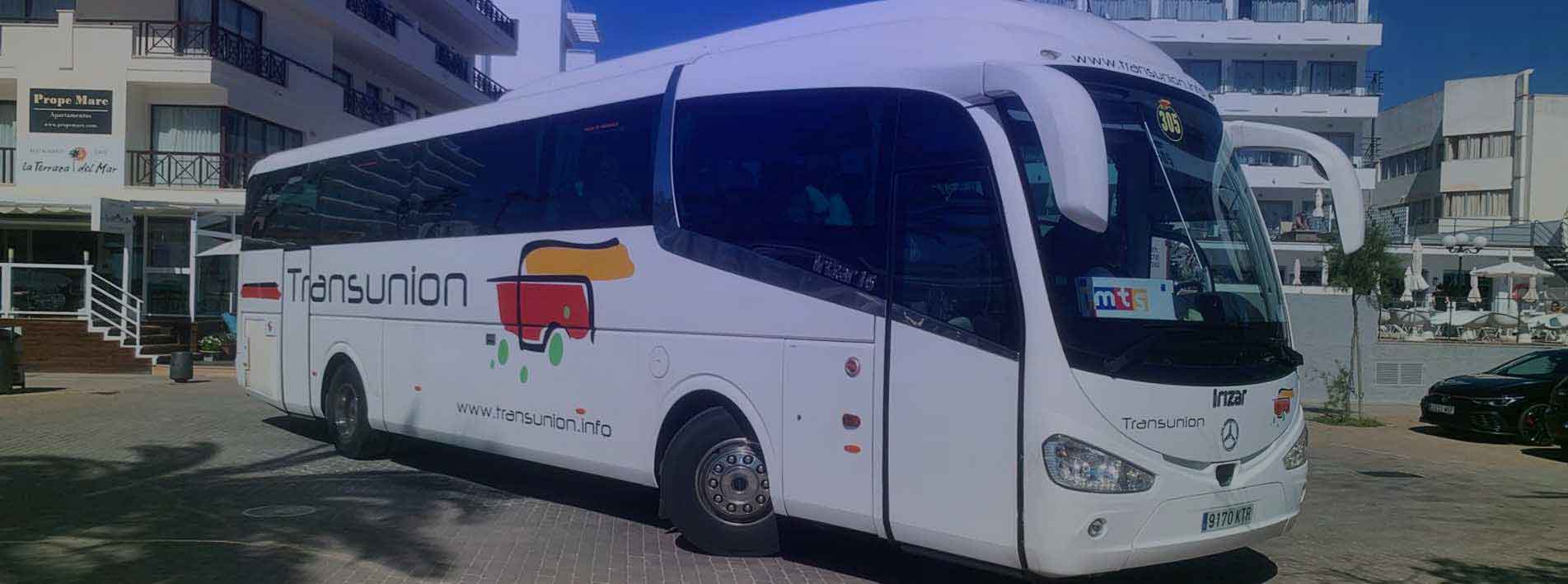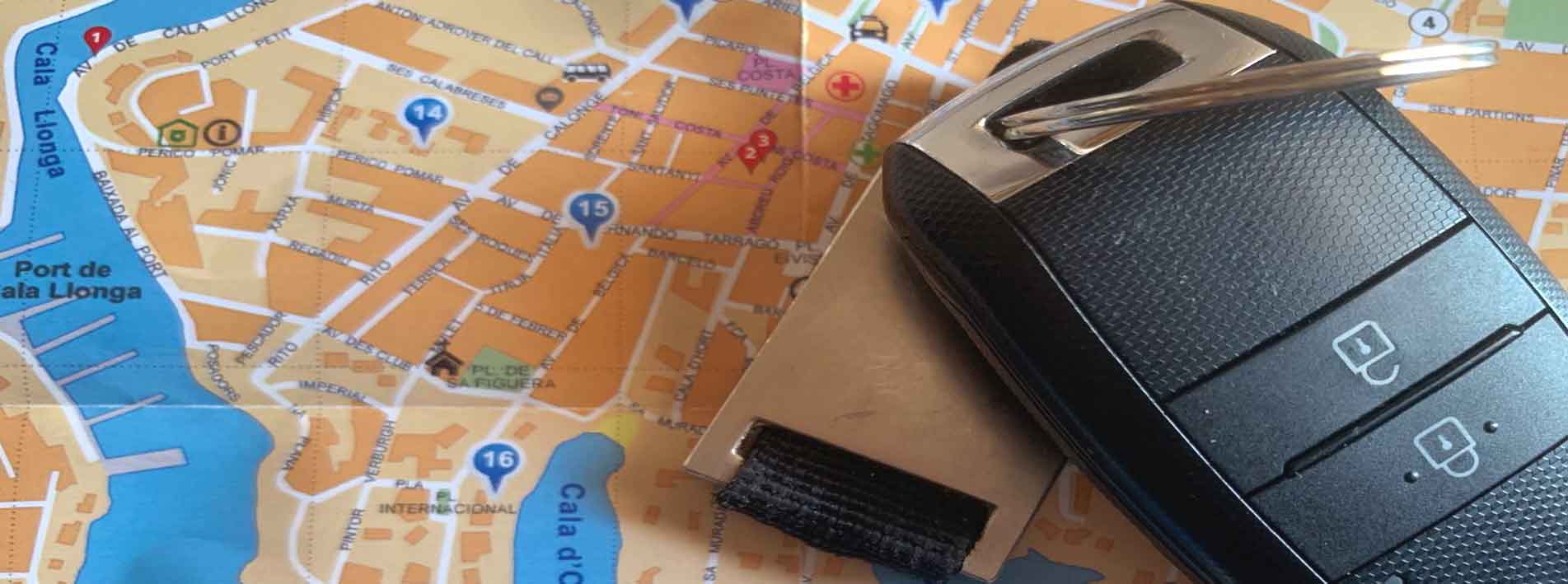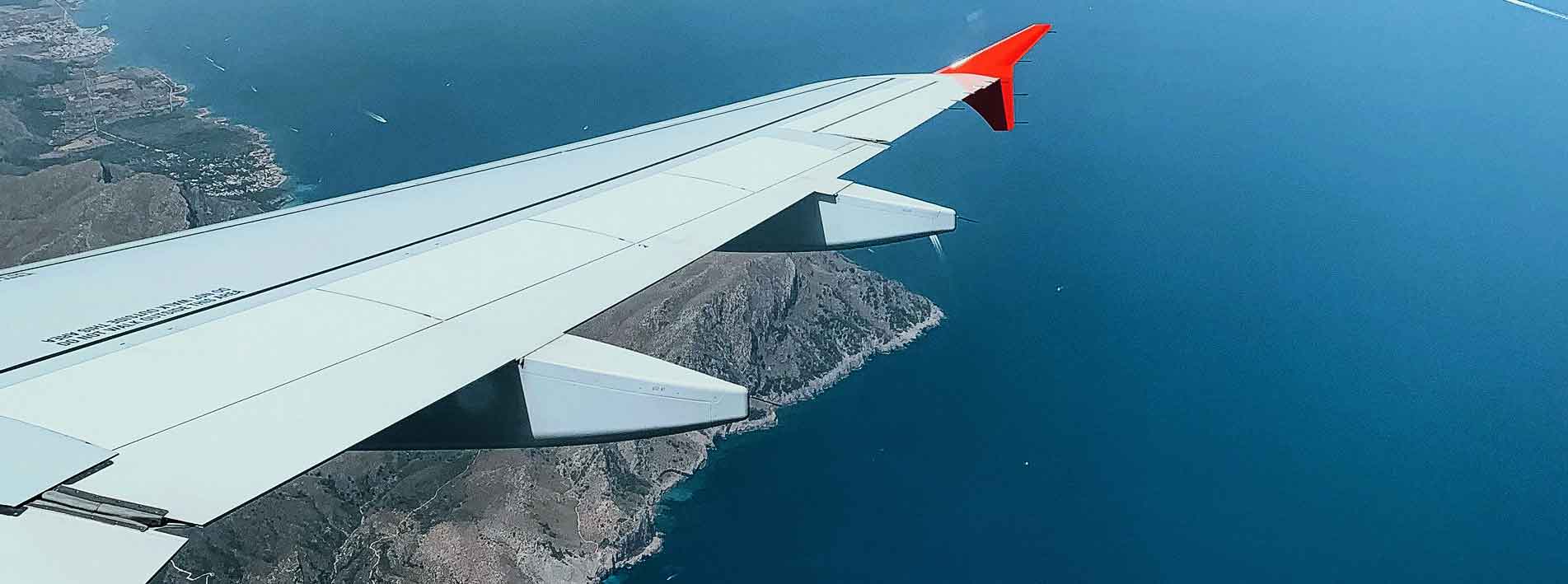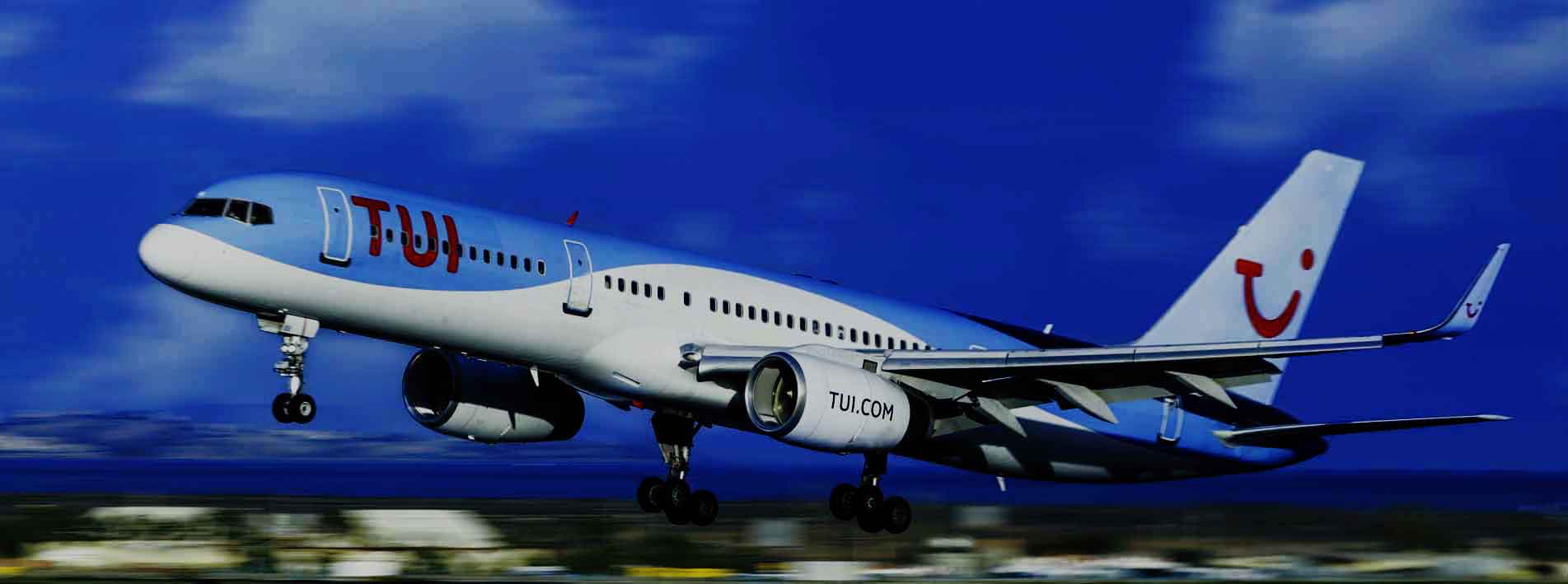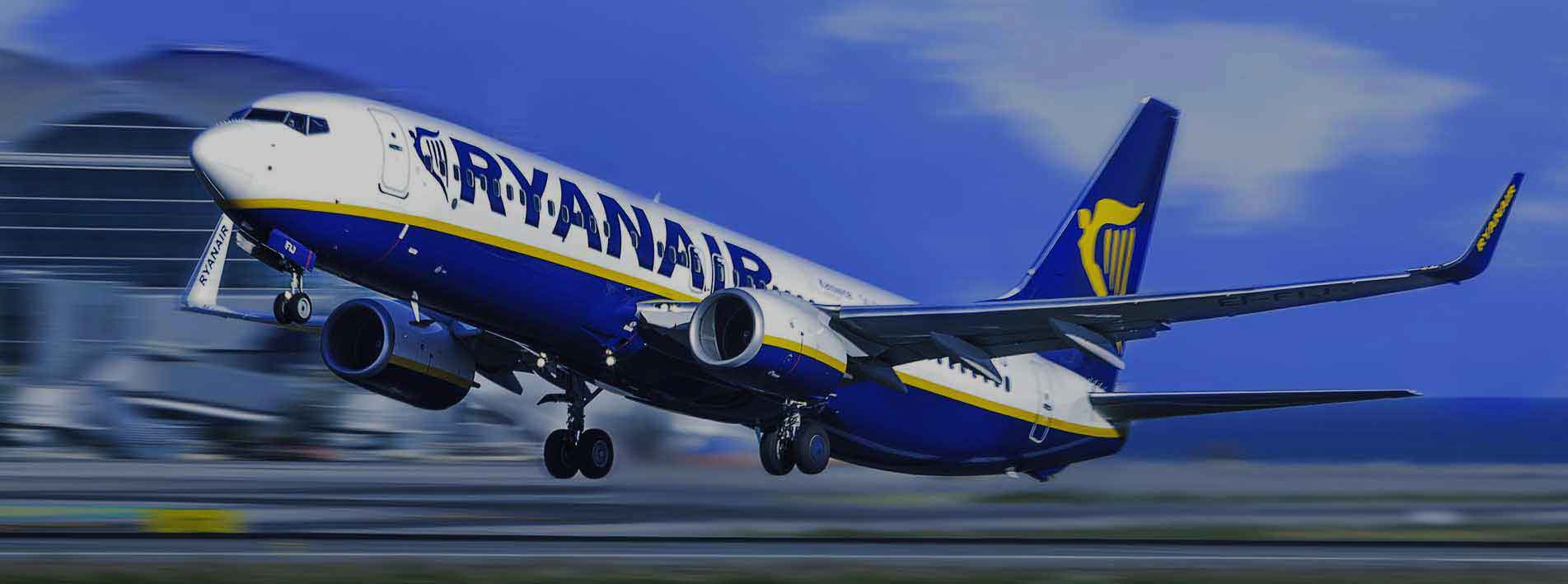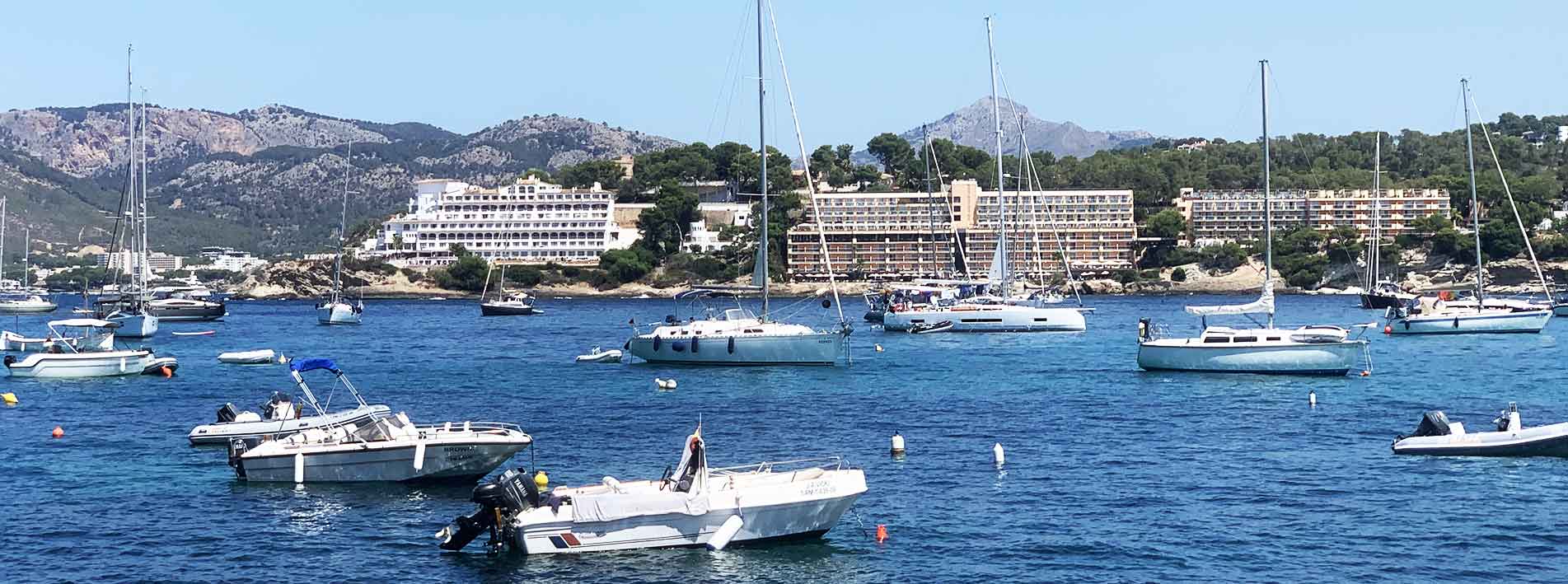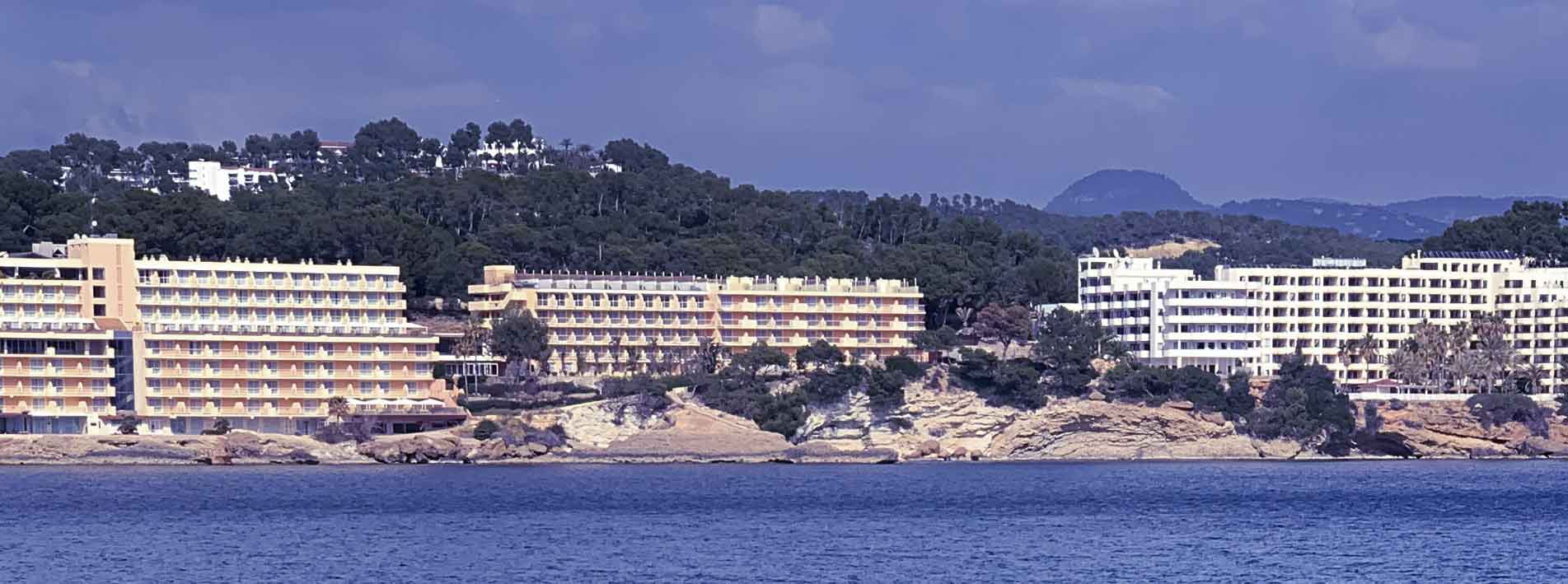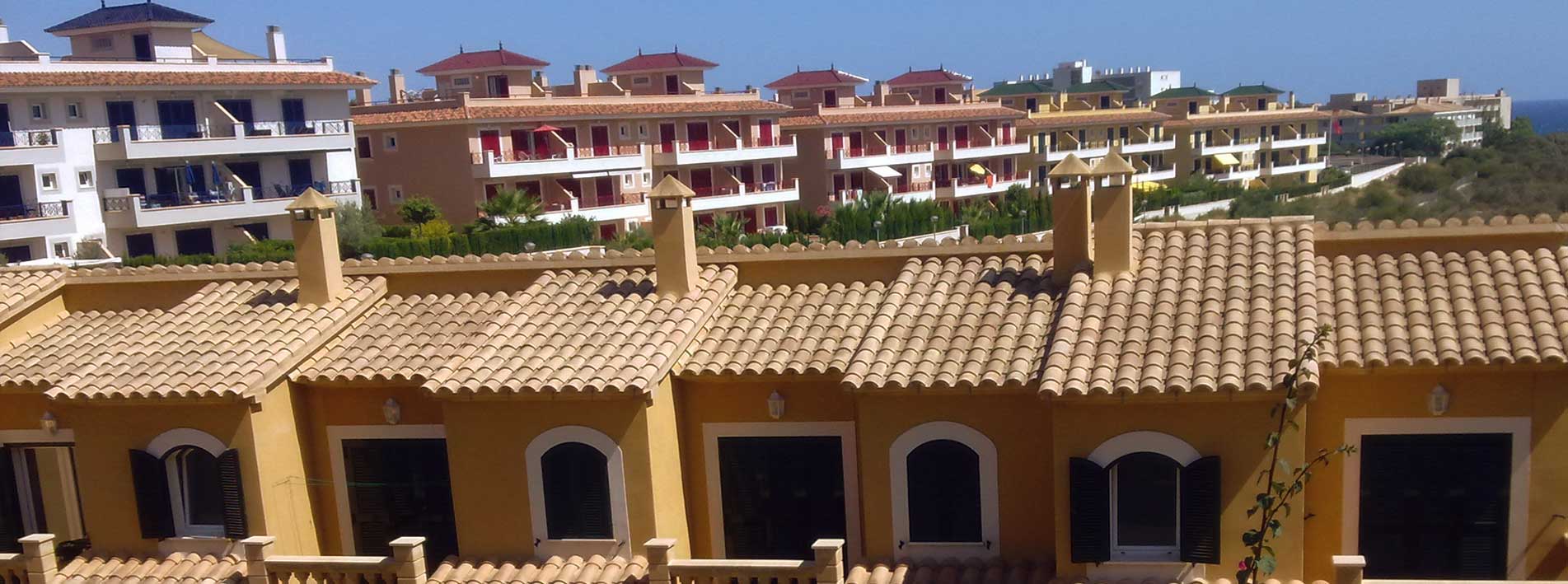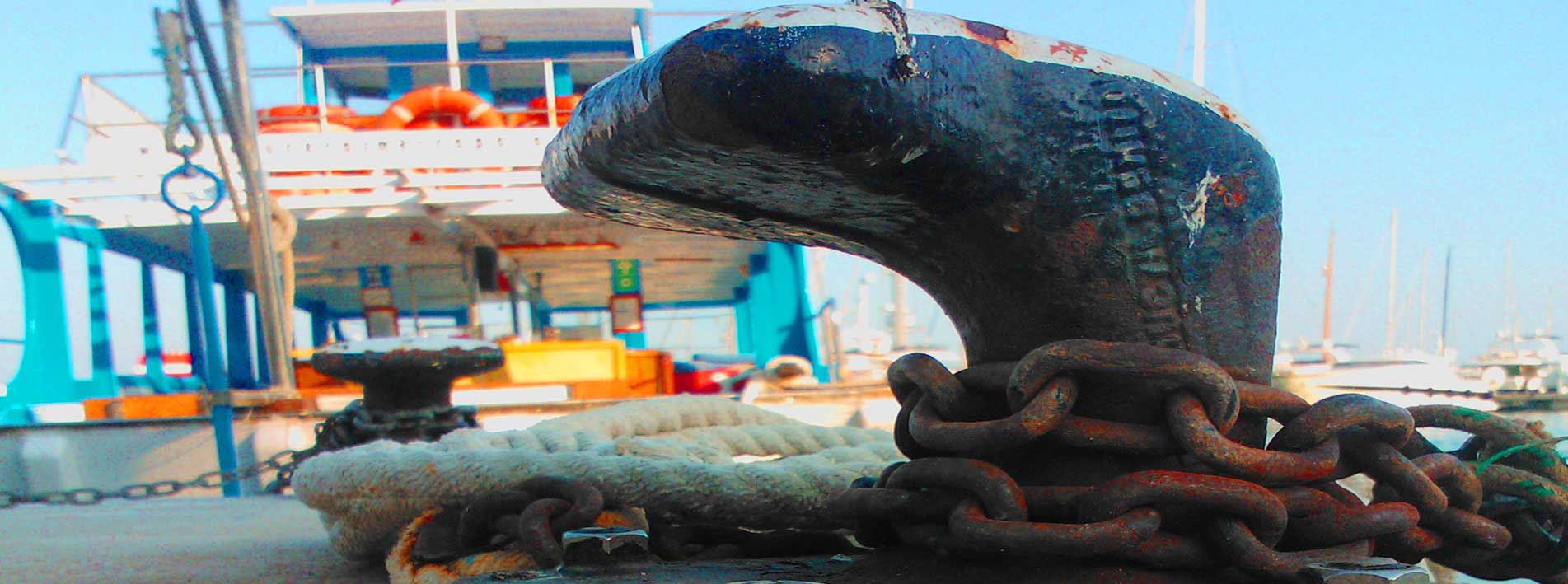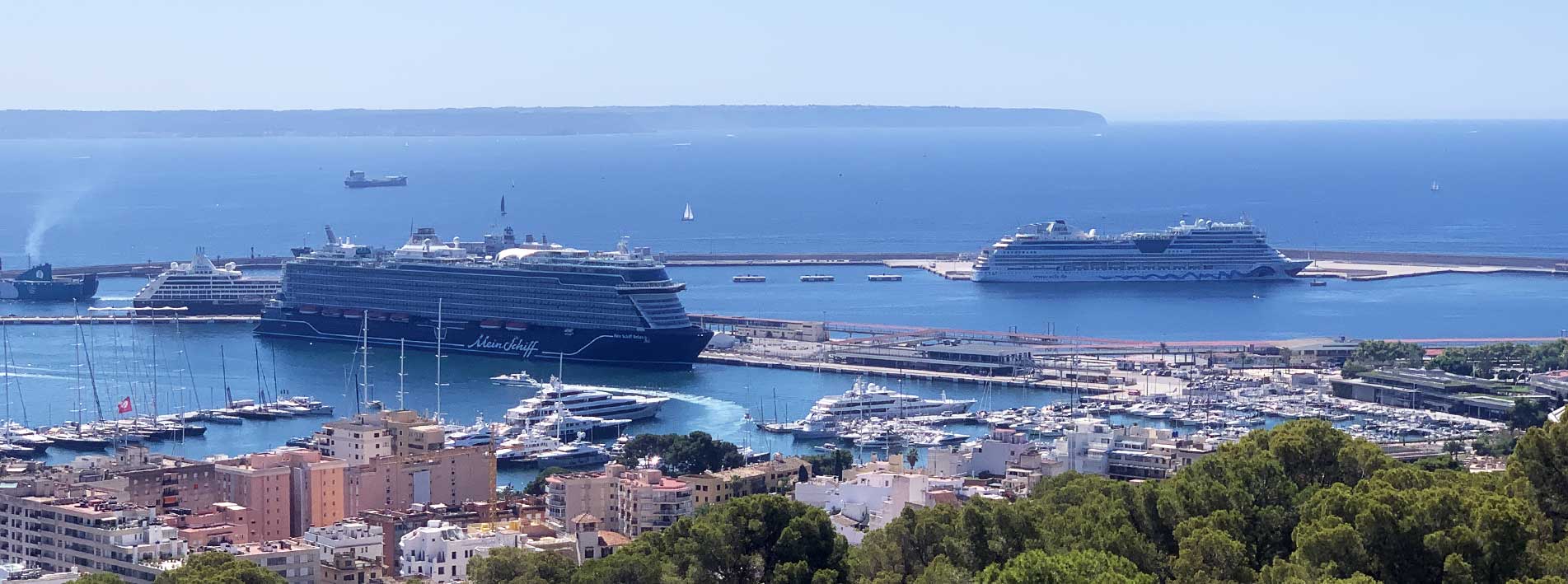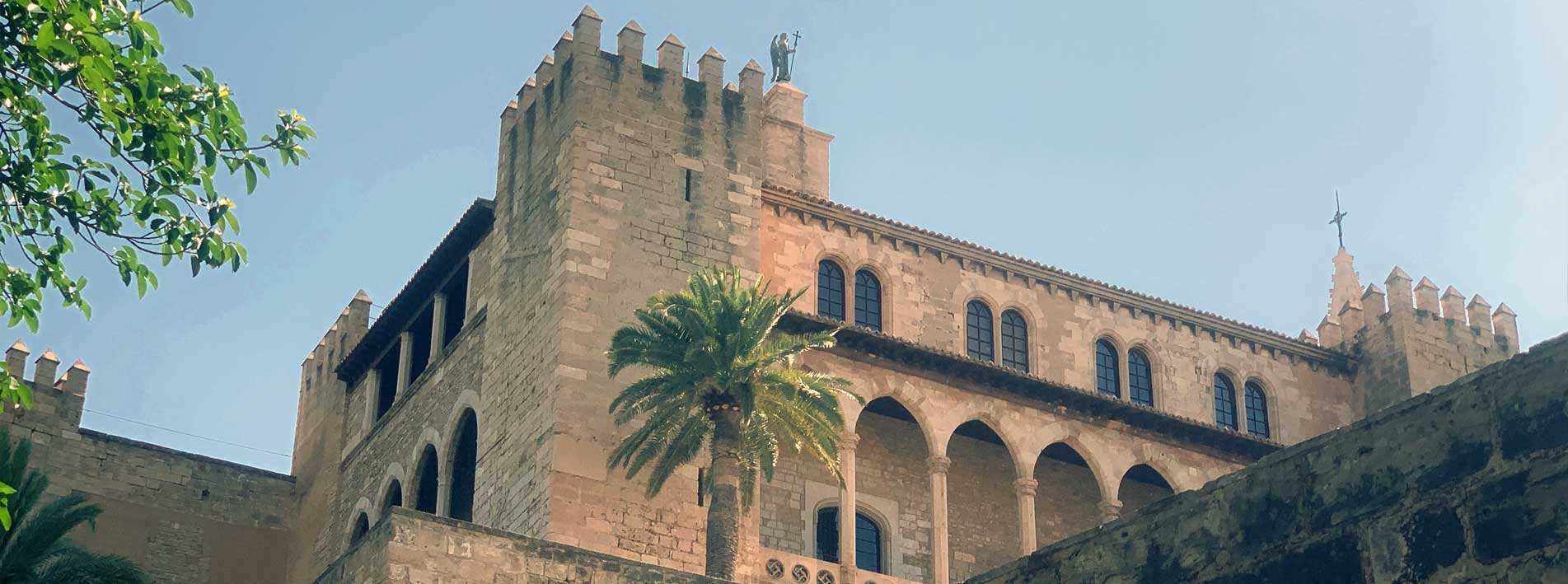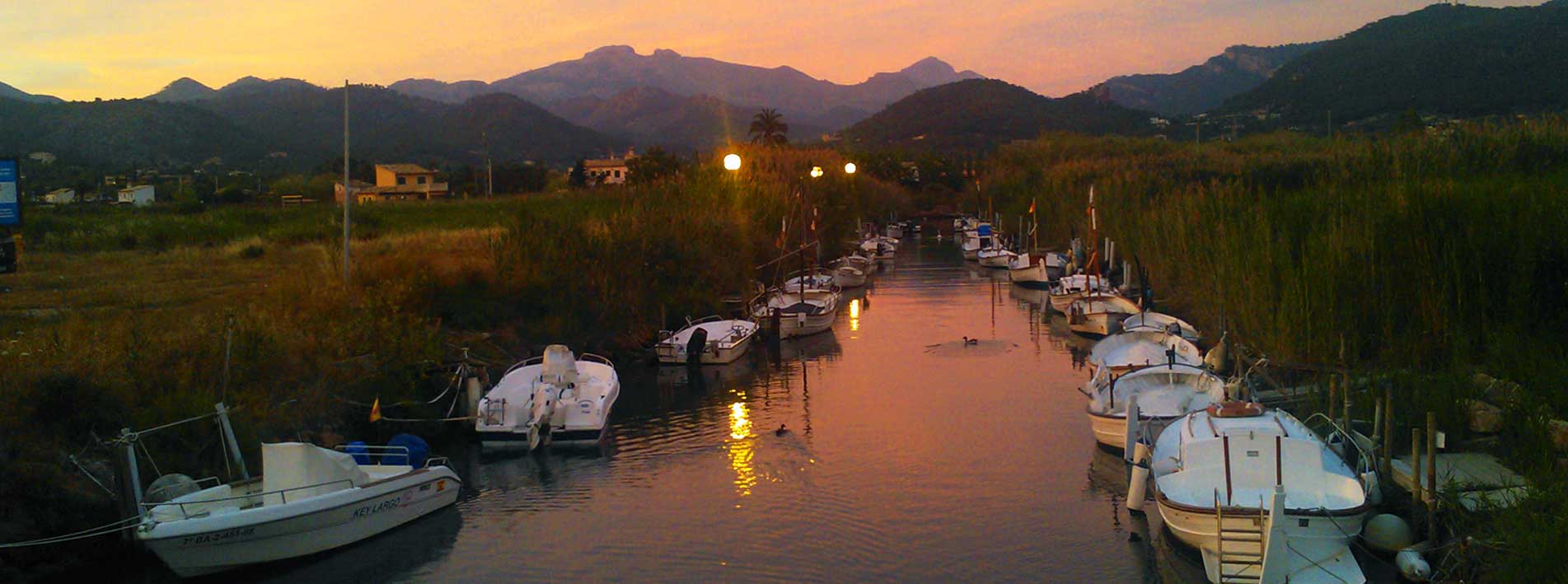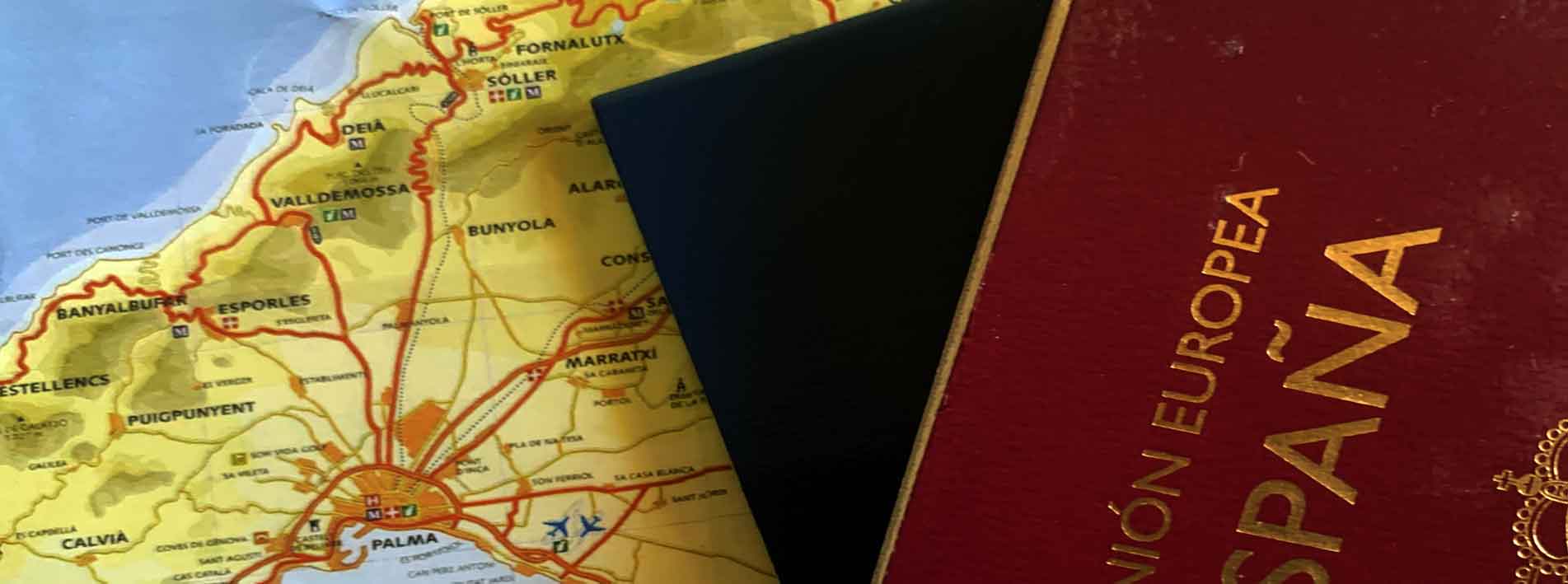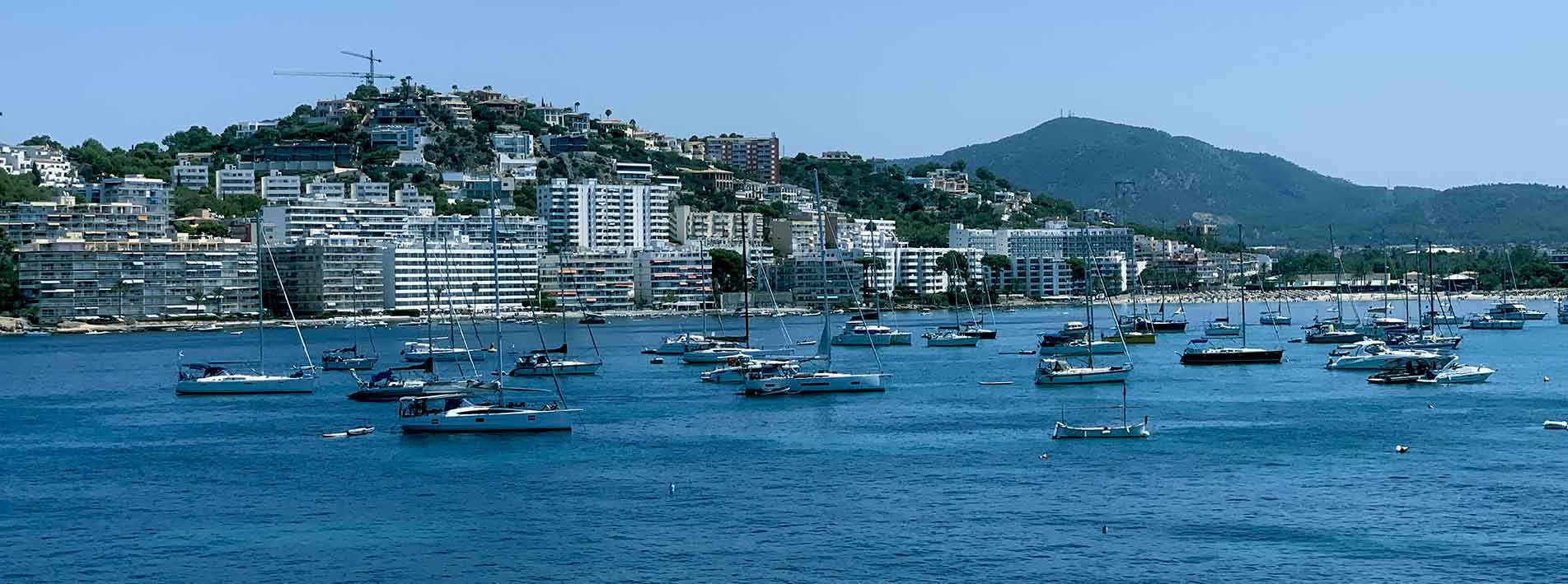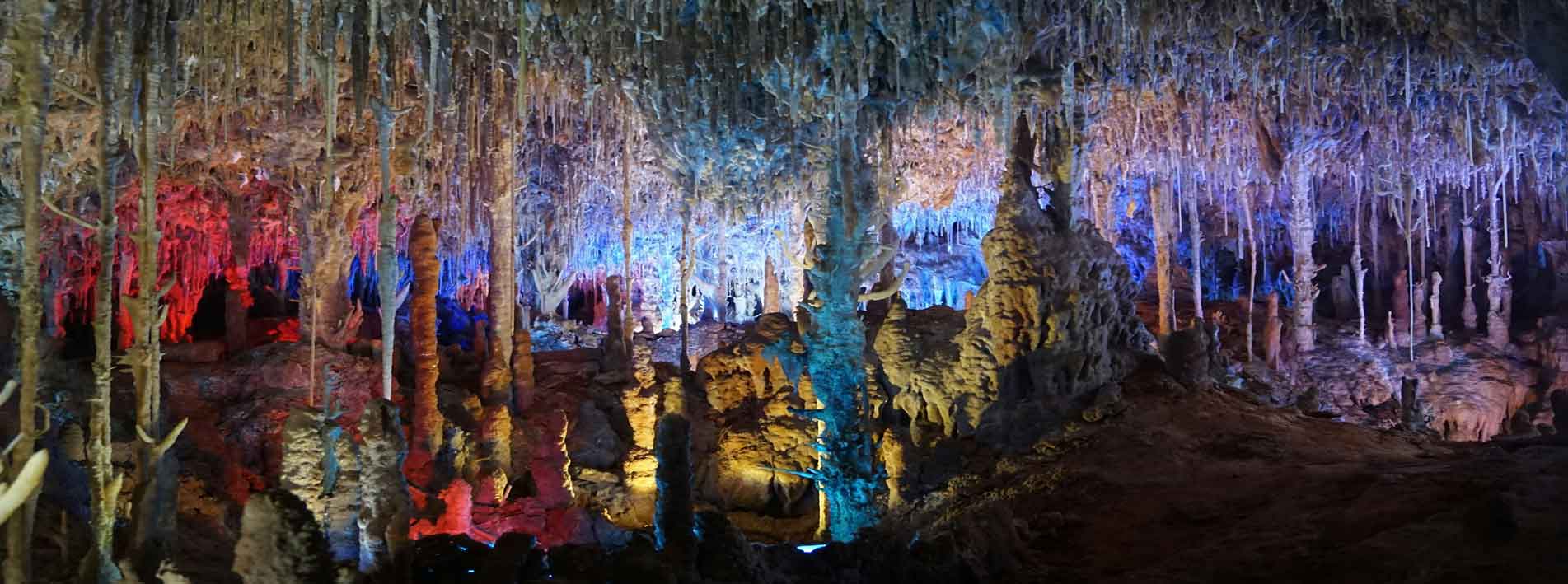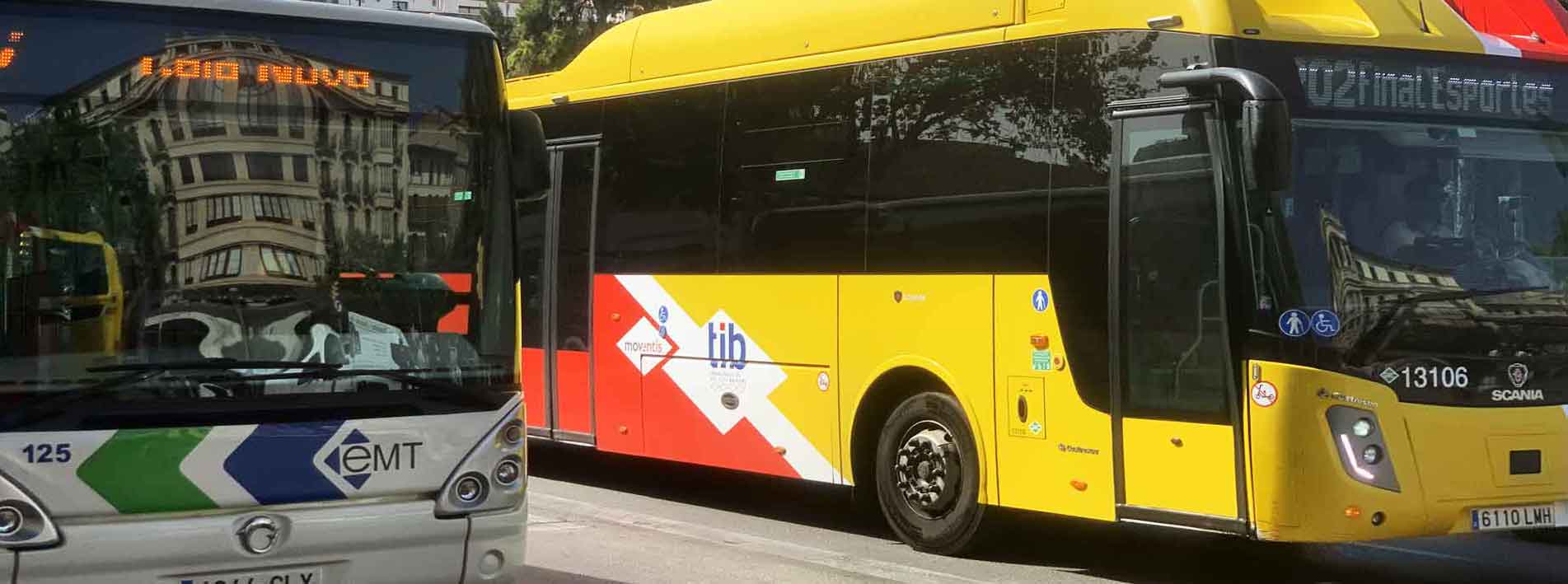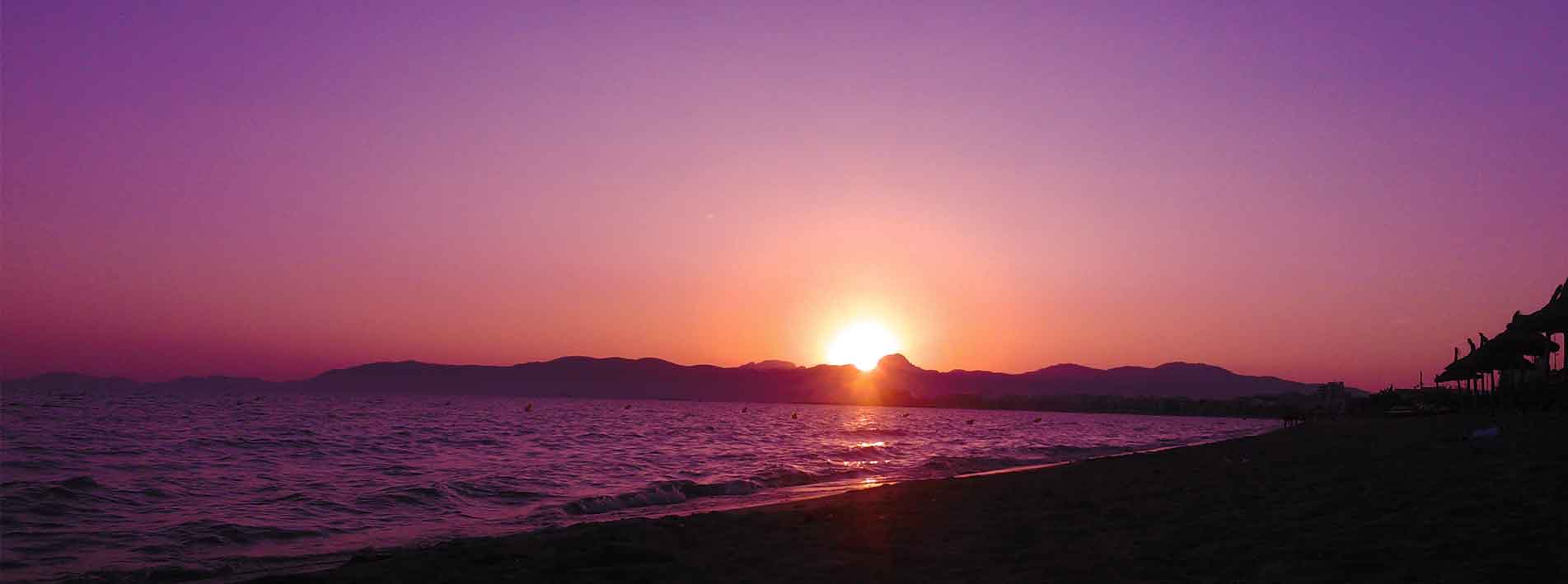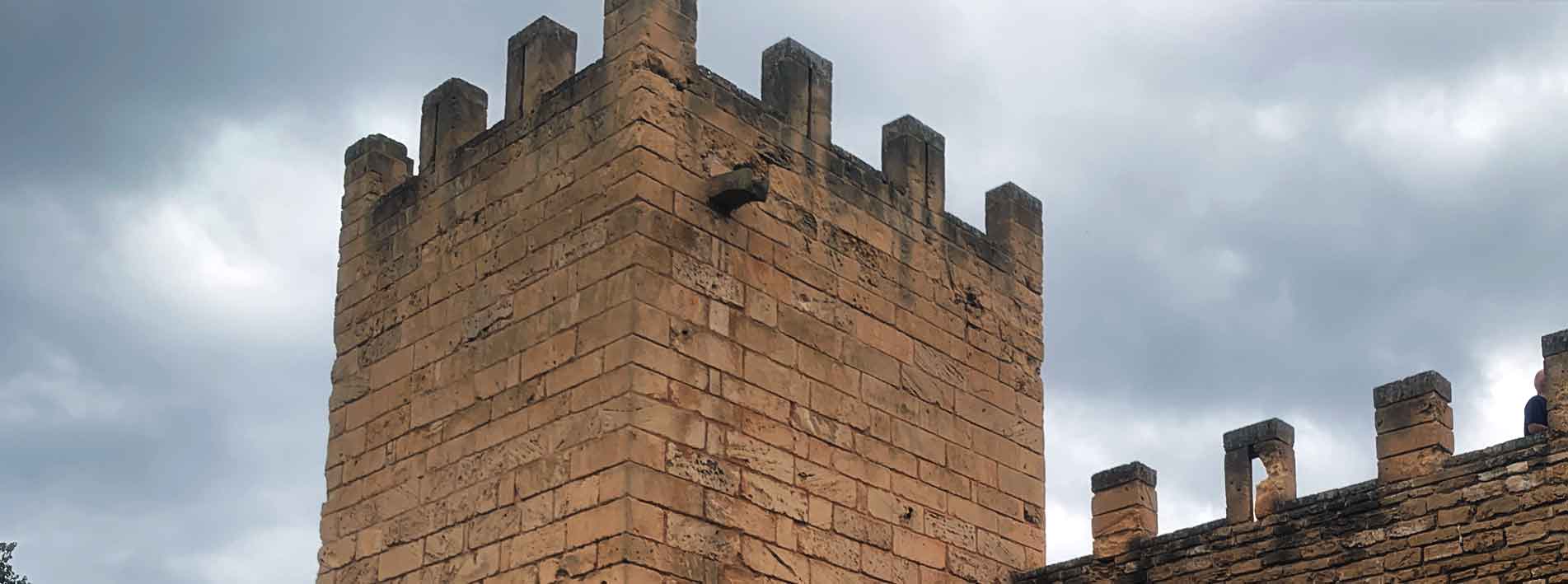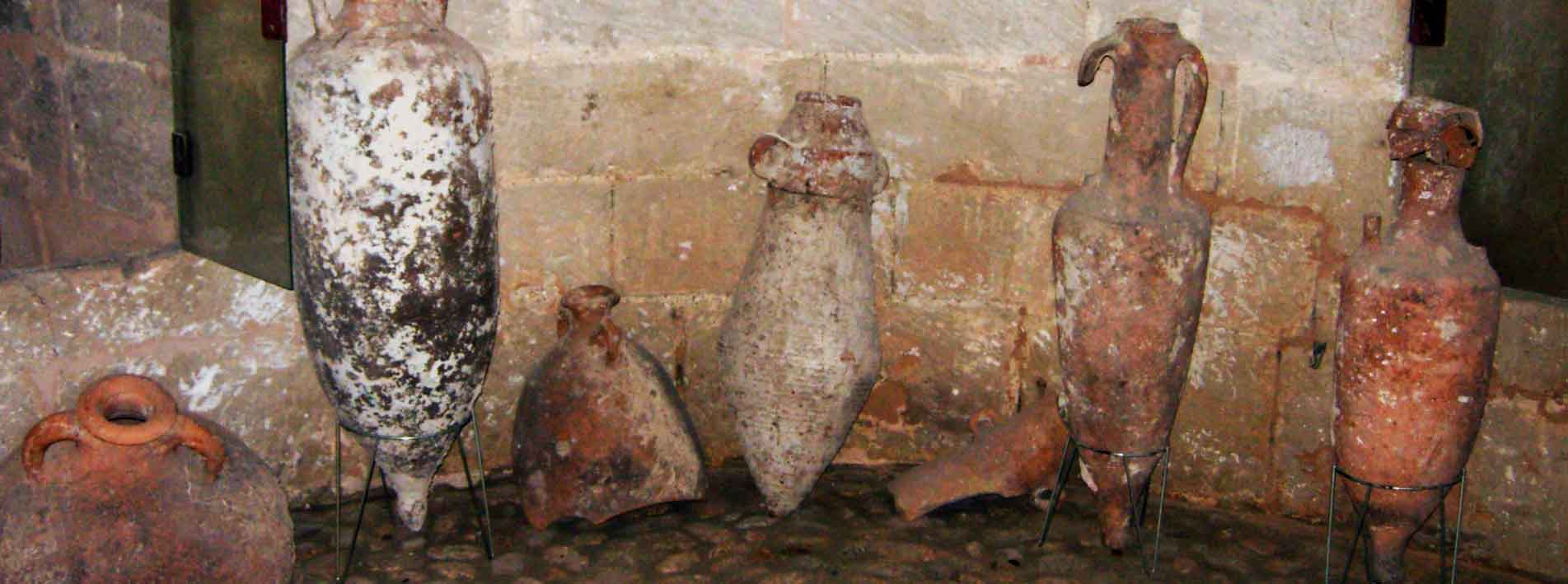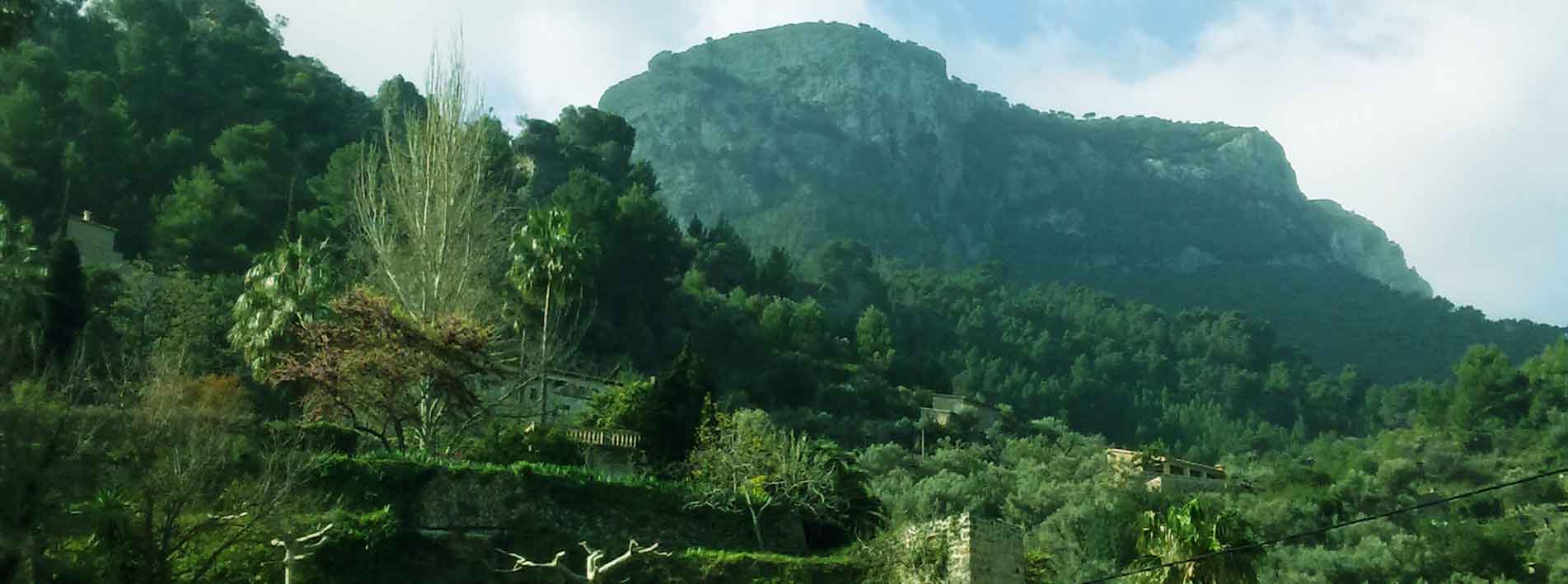Santa Ponsa
Santa Ponsa (or Santa Ponça in Catalan) is a locality in Mallorca and an important tourist and residential area in the municipality of Calvià, covering an area of 4.80 square kilometres and with approximately 11,000 inhabitants. It is located on the southwest coast of Mallorca and is famous for its sandy beach, its marina and its golf courses. In addition, Santa Ponsa has a deep historical significance as it was the place where King James I landed in 1229 to undertake the conquest of Mallorca.
Location of Santa Ponça
Santa Ponsais a town located on the southwest coast of Mallorca, in the municipality of Calvià. It is about 20 kilometres from Palma, the island’s capital. Santa Ponsa is situated at coordinates 39°30′54″N 2°28′58″E and is about 30 km from the Mallorca airport, with a driving time of about 22 minutes. It borders other tourist resorts such as Palmanova, Magaluf and Costa de la Calma, which also belong to the municipality of Calvià.
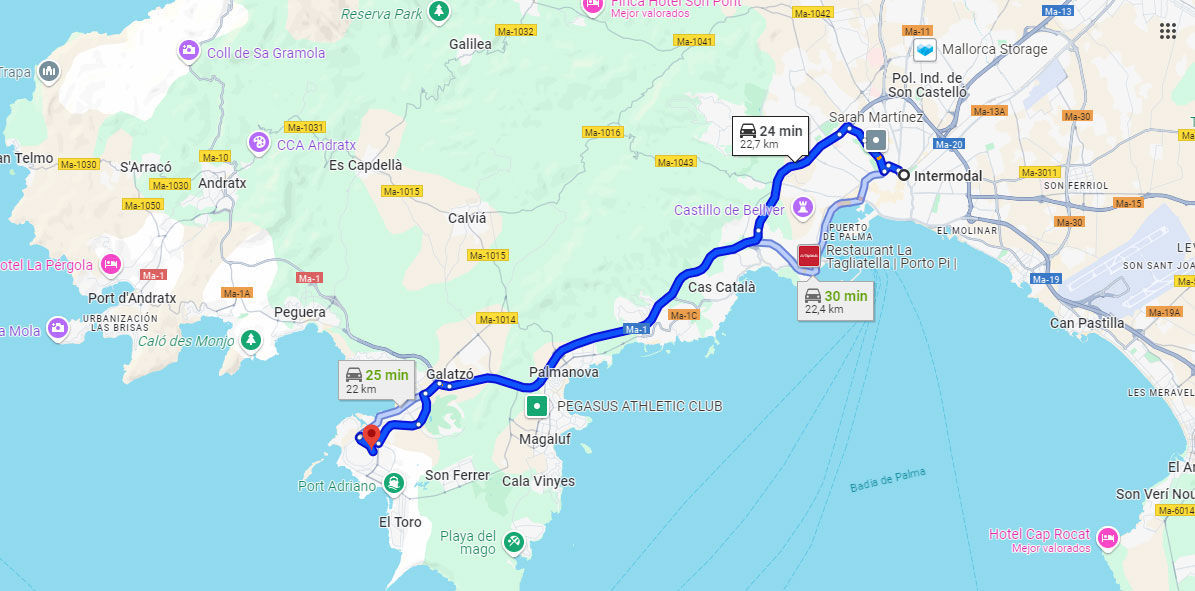 How to get to Santa Ponsa?
How to get to Santa Ponsa?
Santa Ponsa is easily accessible from Palma de Mallorca. You can get there by taxi, by car, or by bus (line 103 of the Interurban Public Transport service, which takes approximately 26 minutes).
To reach Santa Ponsa by car, from the north of Palma, take the Ma-1 motorway towards Andratx/Calvià. There are no intermediate exits until you reach Santa Ponsa. Look for the exit towards Santa Ponsa (exit 20 or 21, depending on the specific area you are going to). Once in Santa Ponsa follow the local signs to reach your specific destination. Driving from Palma to Santa Ponsa on the Ma-1 road takes about 17 minutes.
To get to Santa Ponsa by car, from Palma Airport (PMI) take the Ma-20 road and then the Ma-1 to get to Santa Ponsa. The drive from the airport takes about 30 minutes.
To get to Santa Ponsa by bus from Palma, line 103 is the best option, with departures from Estació Intermodal and Plaça Progrés in Palma to Santa Ponça Centre 1 station. The journey takes approximately 26 minutes and buses leave every 30 minutes. You can also take line 123 from Cas Català, or line A11 which connects the airport with Santa Ponça, Magaluf and Palmanova. To get to Santa Ponça from other towns in Mallorca, consult lines 102 (Peguera), 106 (Nova Santa Ponça), 107 (Es Capdellà) and 122 (Port d’Andratx).
Toponymy of Santa Ponsa
The toponymy of Santa Ponsa is intrinsically linked to its history as the landing place of James I and the subsequent development of the area as a commercial port. Santa Ponsa owes its name to the historical importance of its bay as the landing place of King James I in 1229, marking the beginning of the Christian reconquest of Mallorca. The name “Santa Ponsa” is believed to derive from “Santa Piscina”, referring to the shape of the bay. The original name, “Sa Caleta”, refers to the area where the Santa Ponsa Marina now stands, where a cross is erected in commemoration of the landing.
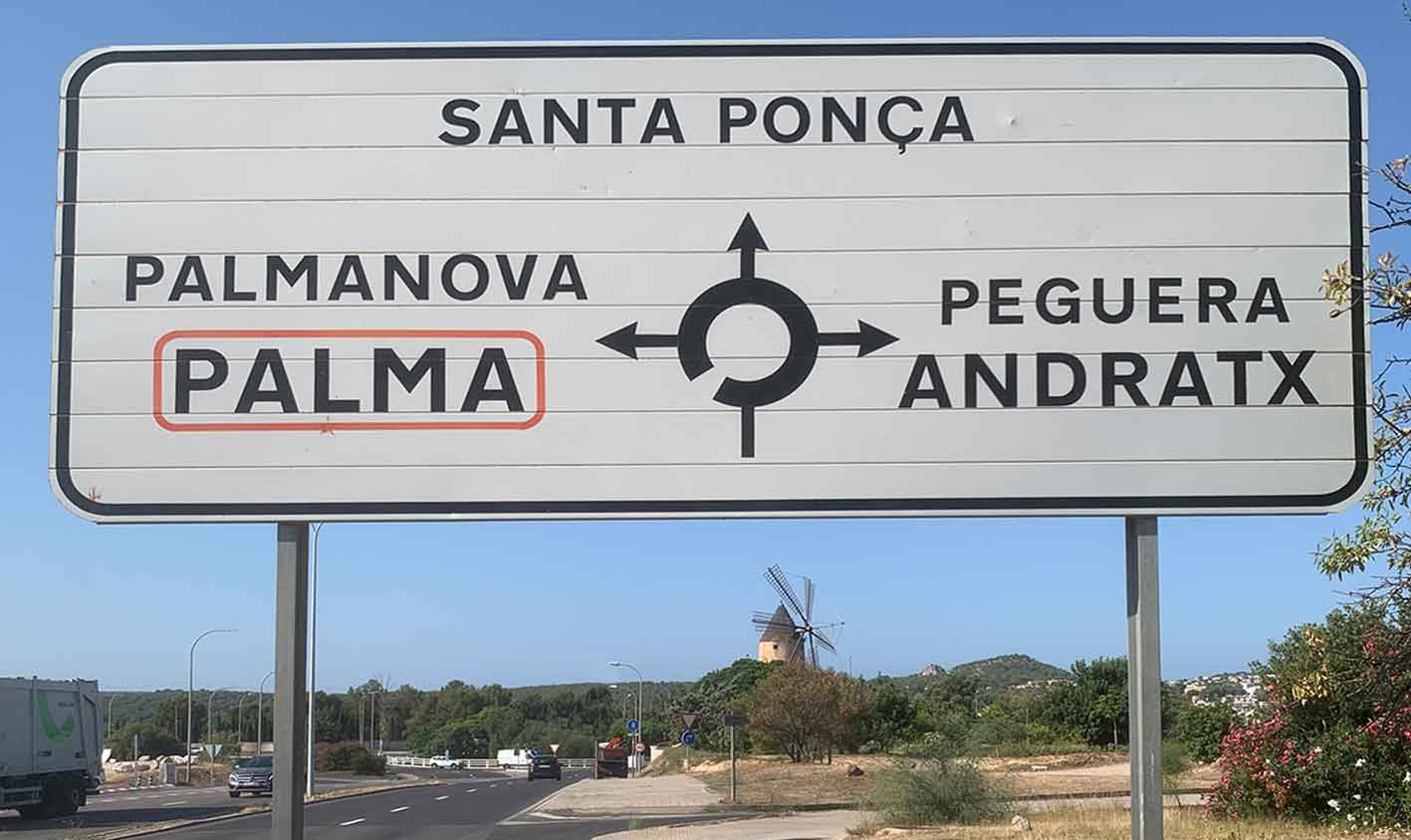 Historical Context: Development and Transformation
Historical Context: Development and Transformation
Santa Ponsa has a rich history that combines the past with modern tourist development and its geography. Its historical importance lies in the landing of James I in 1229, an event that is celebrated annually.
Santa Ponsa is home to vestiges of the Talayotic culture. At Puig de sa Morisca there are remains of a Talayotic settlement dating back to the Bronze Age, proving human presence since prehistoric times. Santa Ponsa is believed to have been a Roman settlement, with archaeological finds such as the site of Sa Mesquida, dating from the 1st century AD.
During the Middle Ages Santa Ponsa was an important commercial port with its own hospital. In 1229, it was the landing place of James I in his conquest of Mallorca. In the 16th century Santa Ponsa functioned as a commercial and transport port, becoming known as “Término de Santa Ponsa” before becoming part of the municipality of Calvià and eventually becoming an important residential tourist area.
The construction of the urbanisation began between 1928 and 1930, with summer houses in the garden city style. The Spanish Civil War interrupted development, which resumed in 1960, focusing on mass tourism with the massive construction of hotels and flats.
Santa Ponsa: General Information
Santa Ponsa offers a wide range of accommodation and activities to suit all tastes. It is known for its main beach, its lively atmosphere and its diverse tourist offer that includes water sports, nightlife and shopping options.
Gastronomy in Santa Ponsa
Santa Ponsa offers a wide gastronomic variety, from Mediterranean and Spanish cuisine to international options such as Italian, Asian and Argentinian, with restaurants ranging from casual to more elaborate and atmospheric beachfront options. Visitors can enjoy local dishes, fresh seafood and, of course, the famous typical mallorcan cuisine.
In Santa Ponsa there are also many beach bars offering drinks and food all day long. In short, in this popular resort you will find everything from seafood restaurants and Italian restaurants to fast food and vegetarian options.
Accommodation in Santa Ponsa
Santa Ponsa is a tourist destination that offers a wide range of accommodation and hospitality options. Here you can find everything from comfortable and sumptuous luxury hotels to all-inclusive resorts, as well as numerous flats and villas. Santa Ponsa has a robust tourist infrastructure and has a wide variety of properties and resorts to choose from, with a very high accommodation capacity in high season…
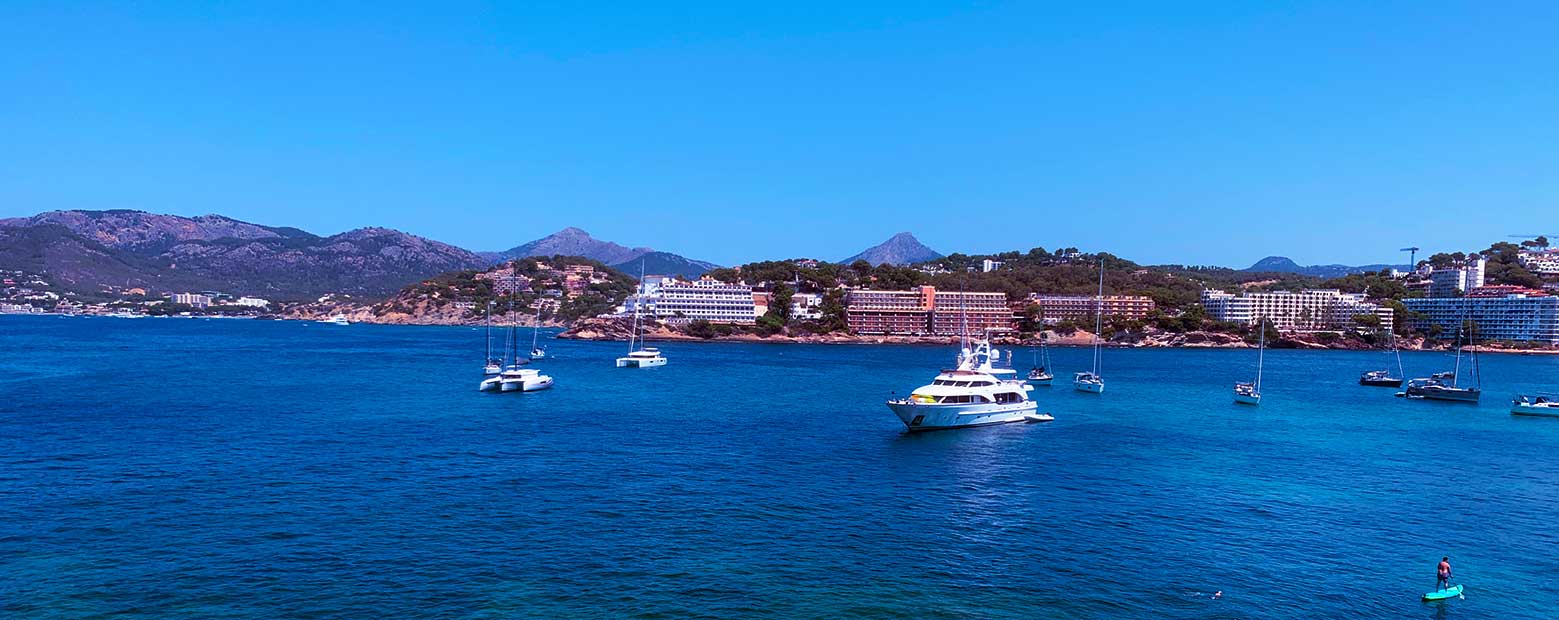 Leisure in Santa Ponsa
Leisure in Santa Ponsa
Santa Ponsa offers a wide range of activities and leisure options to suit all tastes. The beaches, such as Santa Ponsa beach, are ideal for families, with shallow waters and play areas for children, as well as lifeguard services. In terms of activities, there are numerous options for sporting activities (and water sports) such as sailing, surfing, diving and jet-skiing, as well as natural areas and adventure parks such as Jungle Parc. There are also options for boat trips, such as dolphin watching cruises or catamaran rides.
In addition, Santa Ponsa has theme parks such as Marineland and Katmandu Park and is well connected to nearby attractions such as Palma Aquarium. The nightlife and restaurant scene is also attractive and there is no problem finding accommodation given the wide range of tourist facilities on offer. The annual Fiesta del Rei En Jaume is a major cultural event, with parades, a mock battle and a medieval market. This Fiesta and other local historical celebrations provide excellent opportunities to immerse yourself in the history and culture of Mallorca, enjoying the festive atmosphere and taking part in a variety of family activities.
Nightlife in Santa Ponsa
The Santa Ponsa zone is known for its lively nightlife, with numerous bars and pubs to enjoy drinks and music. The area around Avenida Ramon de Montcada is particularly known for its bars and pubs with live music and various nightlife options.
Weekly markets
In Santa Ponça, there are two main weekly markets: one on Saturday mornings on Avenida Riu Sill, near the health centre and a craft market on Calle Puig de Galatzó from June to October, in the afternoon. The weekly Saturday market offers a variety of products, including fresh food, clothes and flea market items, while the craft market focuses on handmade products.
Santa Ponça weekly market:
Day: Saturday mornings.
Location: Avenida Riu Sill, near the health centre.
Products: Fresh food, textiles, clothes, street market items, etc.
Timetable: Generally in the morning, until 13:00 hours.
Santa Ponça Night Craft Market
Days: From June to October, every day.
Location: Puig de Galatzó street.
Products: Local crafts.
Timetable: In the evenings, from 7pm to midnight.
In addition, on Saturdays, from 8:00 to 14:00h, in the Polígono de Son Bugadelles, 07183, Calvià there is a weekly market with a wide variety of products, including antiques, collectors’ items and flea market articles.
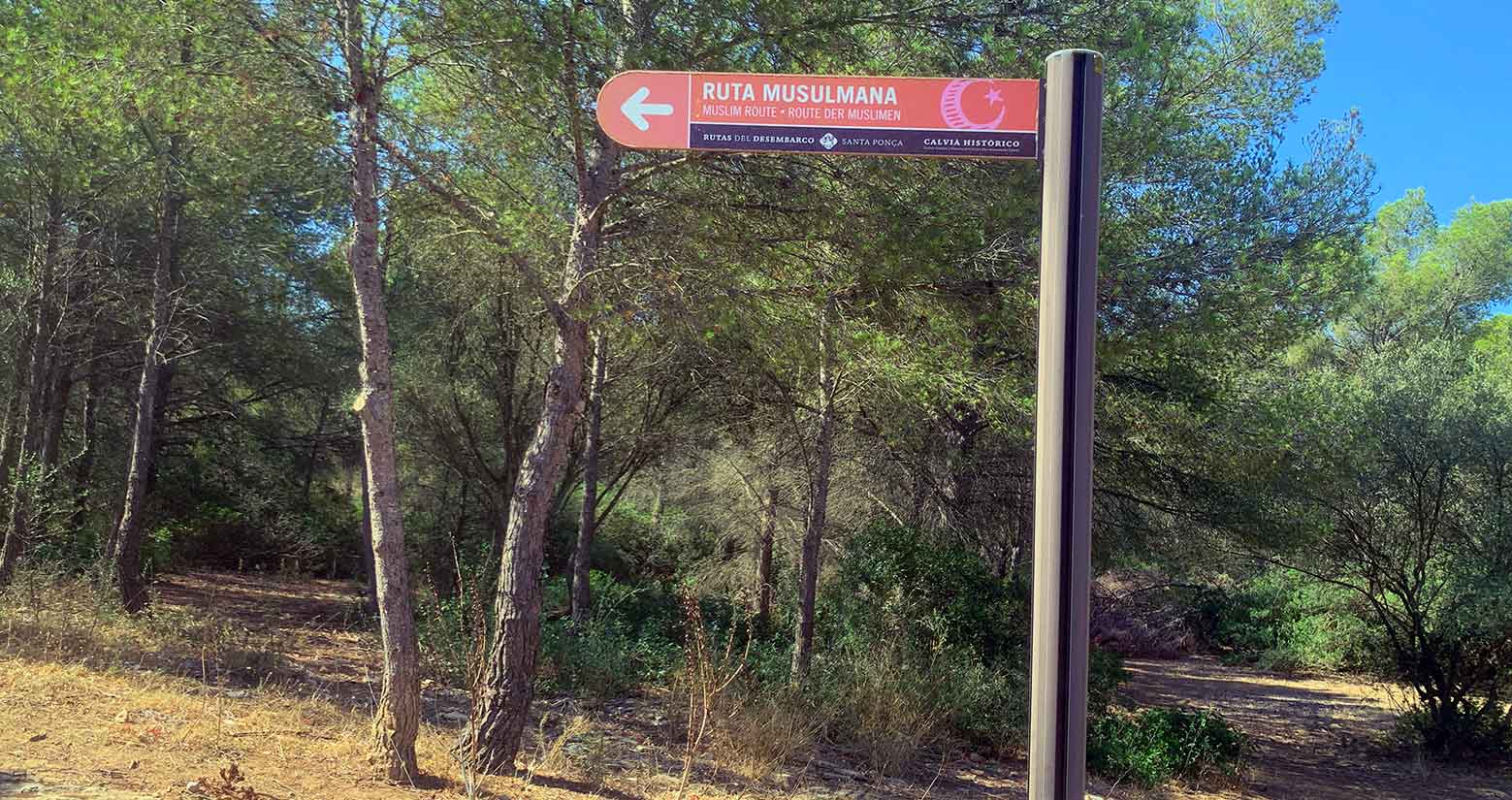 Importance of golf in Santa Ponsa
Importance of golf in Santa Ponsa
To talk about Santa Ponsa and not mention the importance of golf in the region is nonsense. This Mallorcan town is known for its beautiful beaches and its hospitality offer, of course, but also for the particular treatment it gives to golf tourism. The Santa Ponsa Golf Club, with its three courses, is a reference point on the island and has hosted important tournaments on the European Tour. The Santa Ponsa I course, inaugurated in 1977, was the first in the municipality and the second in Mallorca and stands out for its length and design, with the 10th hole being one of the longest in Europe. It also has two more courses (Golf Santa Ponsa II and III) for the exclusive use of members.
In short, Santa Ponça, located in the southwest region of Mallorca, is a popular tourist destination known for its large sandy beach, water activities and family atmosphere. In addition to its coastal attractions, Santa Ponça boasts a marina, golf courses and a rich history related to the landing of King Jaime I. All these attributes and many others include Santa Ponsa in the extensive list of areas or towns in Mallorca that you should visit at least once in your life.
By the way, are you coming to Mallorca on a tourism trip? If you find it helpful, you can also consult our travel guide to Mallorca and more tourist information about the island.

